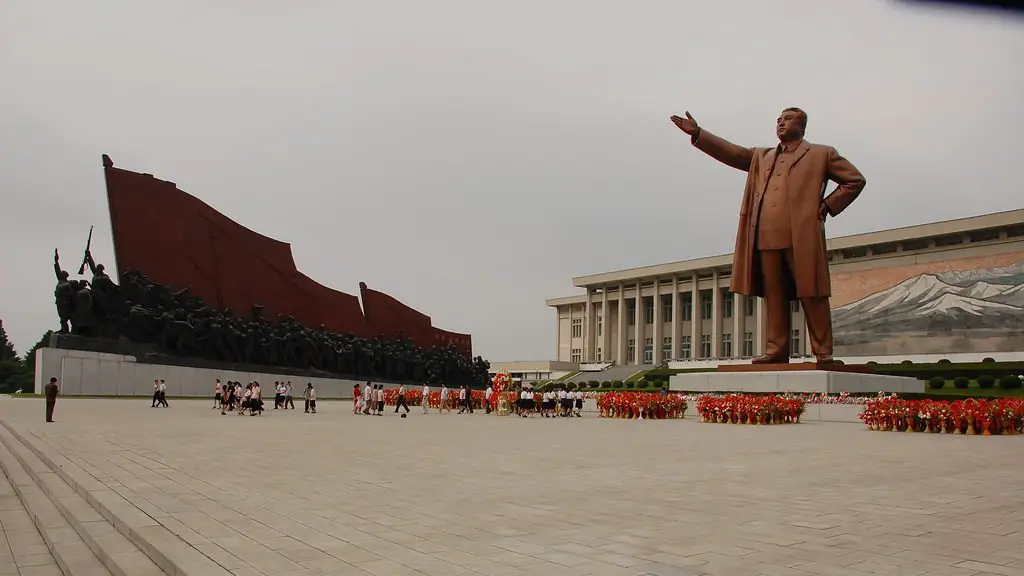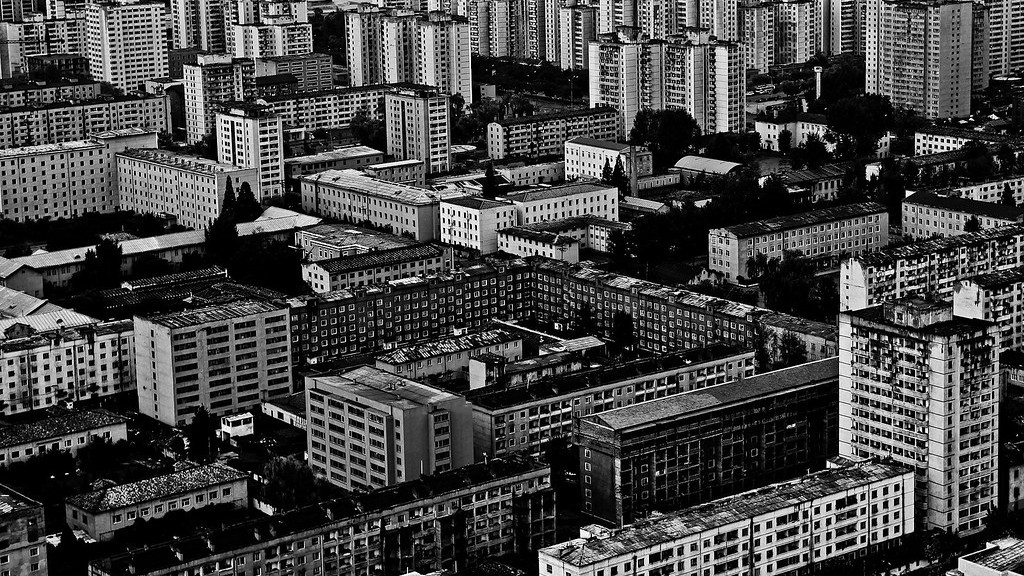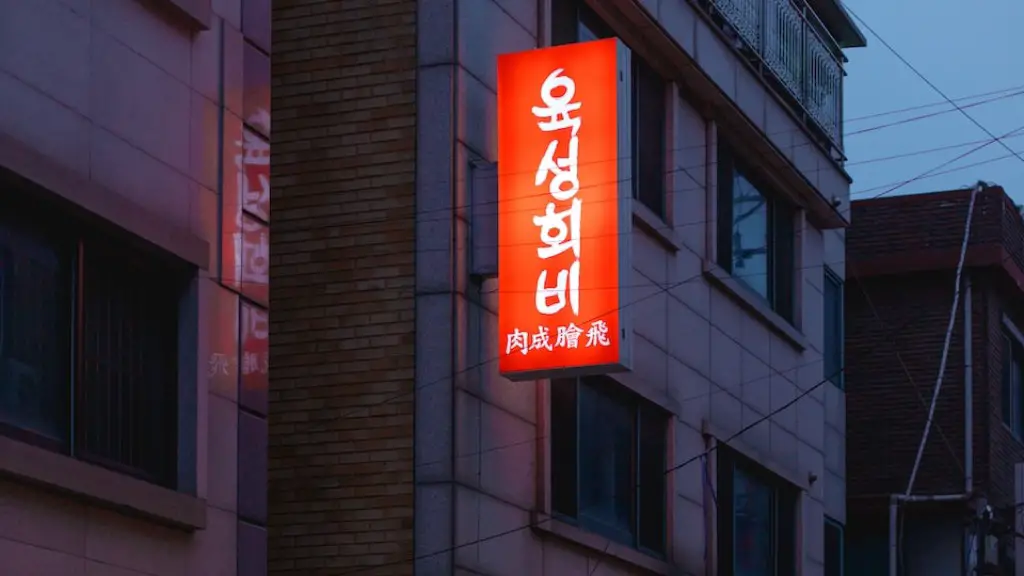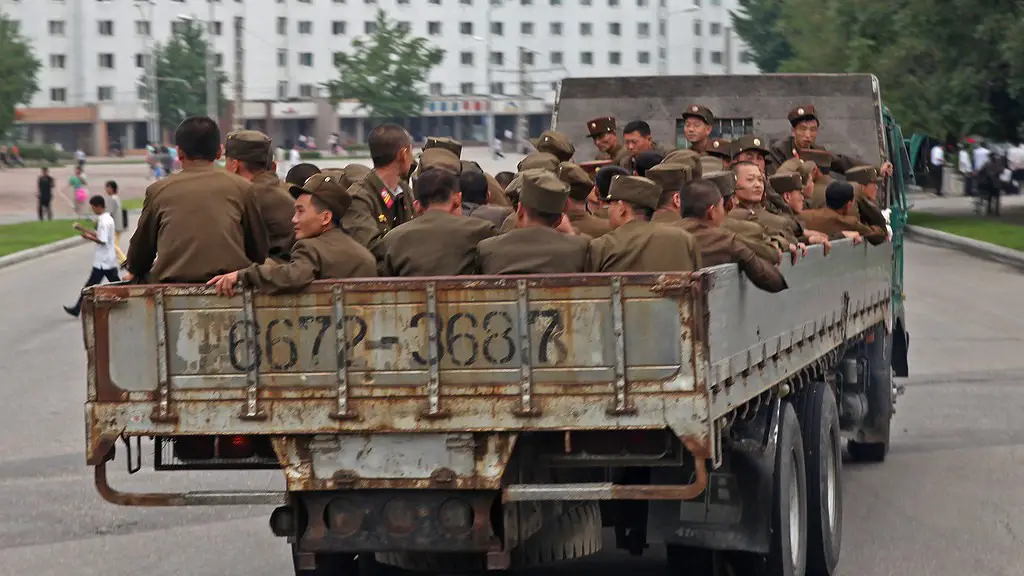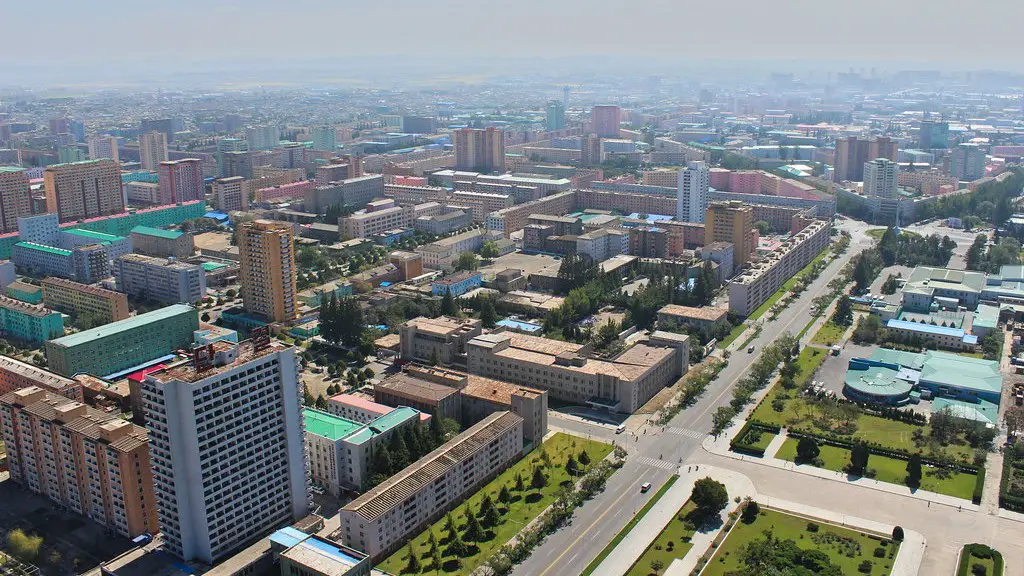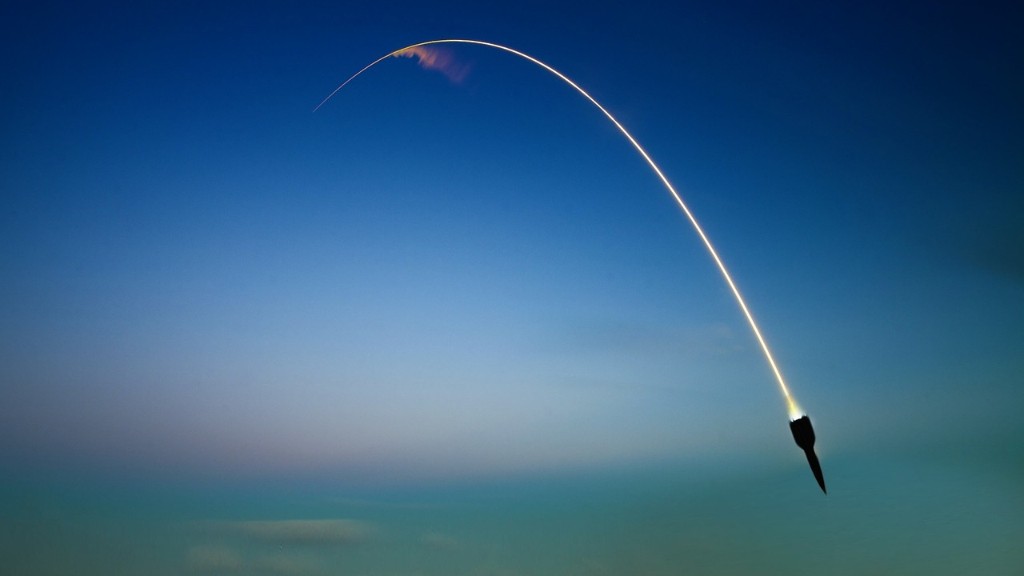Geography
Seoul, the capital of South Korea, is situated just 28 miles from the demilitarized zone that separates North and South Korea. As one of the world’s most heavily militarized borders, it was established after the Korean War in 1953. The resulting buffer zone is approximately 2.5 miles wide on each side, resulting in a total width of 4.2 miles. The DMZ and its accompanying 151-mile long fortified fence form a dividing line between the two countries. Contained within it is the Joint Security Area, which includes the truce village of Panmunjom.
The impact of the Korean War is still visible today, with the city of Seoul bearing the scars of its past. Despite being a modern metropolis, its history is still imprinted in its architecture. Along with the bustling streets, you can find remnants of the conflict such as abandoned tanks and bunkers. The most disturbing reminder is the Cold War-era mountainous “no man’s land” around the two Koreas that has been left untouched for decades.
Seoul’s close proximity to North Korea is a major security concern for South Korea. North Korea’s missile and nuclear weapons programs threaten the safety of the South Korean population and make it a target for further military action. This concern has led the US to station more than 28,000 troops in South Korea, as well as deploy a missile defense system. Despite this, the two countries have been slowly working to find a peaceful resolution to their differences and to create a lasting peace.
Politics
The politics of the Korean Peninsula is complex and convoluted. The two countries have been at odds since the end of the Korean War, when they declared an armistice in 1953. Despite ongoing efforts to build bridges and improve relations, the situation is far from stable. North Korea’s nuclear weapons program has been a formidable roadblock to any diplomatic relations. In addition, North Korea is no stranger to state-sponsored terrorism and human rights violations. This has resulted in harsh sanctions from the United Nations and strained diplomatic ties between the two Korean governments.
The situation on the ground is equally difficult. Seoul is isolated from its northern neighbor as a result of the heavily fortified border. While there has been some cultural exchange in recent years, it is still difficult for North and South Koreans to cross the border. This has led to a situation where North and South Koreans live almost entirely separate lives. With the expansion of the internet, a growing number of North Koreans are exposed to South Korean TV shows and movies – something that the North Korean government strictly bans.
Despite the complex situation, there have been some glimmers of hope in recent years. In 2018 and 2019, South Korea and North Korea held a number of historic and unprecedented summit meetings. These meetings led to the signing of a peace declaration and the beginning of inter-Korean dialogue. These developments could pave the way for a more peaceful and prosperous future for both Koreas, at least in theory. However, there is still a long way to go before this vision is realized.
Security
The South Korean government is acutely aware of the military potential of its northern neighbor. North Korea possess a significant arsenal of weapons and a large and experienced military. The two Koreas share a long and heavily guarded border, making it almost impossible for North Koreans to cross over into South Korea without permission. This situation has led to a high level of security in Seoul and other parts of South Korea.
The South Korean government has taken a number of measures to protect its citizens from North Korean threats. In addition to the US-led missile defense system, the South Korean military has deployed a large number of its own forces along the DMZ. This has been bolstered by an extensive intelligence network, which works to monitor any hostile activity in the region. These measures have proven effective in deterring North Korean aggression and creating a sense of security for many South Koreans.
Despite the presence of a large amount of security, the risk of conflict still lingers. As tensions between the two countries have risen in recent years, the South Korean government has been forced to take more drastic measures. These include the deployment of increased numbers of troops and an extension of Seoul’s defensive capabilities. The situation remains tense and the chance of a major conflict is still very real.
Economics
In recent years, despite the political tensions, there have been some signs of hope that the economic situation between the two Koreas may be improving. South Korea, as one of the most developed countries in Asia, is eager to open up economic exchanges with its northern neighbor. In December 2018, the two Koreas signed a historic economic cooperation agreement, with the goal of reducing the economic gap between the two countries.
The agreement includes various projects and initiatives, such as investments in infrastructure projects and joint business ventures. It also promises increased investment and development in North Korea, in exchange for denuclearization. In addition, North Korea has opened up some of its markets to South Korean businesses, allowing them to capitalize on the country’s untapped potential.
While these initiatives are encouraging, there are still significant obstacles in the way of sustained economic cooperation. The North Korean government is highly suspicious of foreign investment and is tightly controlled. On top of that, the UN sanctions continue to hamper North Korea’s ability to trade with the outside world. Despite these challenges, the South Korean government is optimistic that the economic cooperation between the two countries will grow.
Culture
The long history of separation between the two Koreas has shaped the culture of each. Despite the hostile relations, there is still a shared identity between South and North Koreans that can be seen in the language, customs, and cuisine of each country. Despite the divide, there are still some channels of communication, such as video streaming services, which allow both sides to exchange information and stay connected.
The South Korean government has been increasingly encouraging cultural exchange between the two Koreas in recent years. South Korean musicians have performed in North Korea and North Korean athletes have participated in international sporting events in South Korea. This has led to more open dialogue and a better understanding between the two countries. It is a small but meaningful step in the right direction.
It can be difficult to navigate the complex situation on the Korean Peninsula. But despite the challenging history, there is still hope for a positive future for both Koreas. With improved diplomatic ties, increased economic and cultural exchanges, and an end to North Korea’s nuclear weapons program, Seoul may one day be able to reach out to its northern neighbor and forge lasting peace.
History
The conflict between the two Koreas can be traced back to the Japanese occupation of the Korean Peninsula. After the end of World War II in 1945, Korea was divided along the 38th parallel, with the Soviet Union controlling the northern part and the United States controlling the south. This division soon led to the creation of two separate governments — the Democratic People’s Republic of Korea (North Korea) and the Republic of Korea (South Korea).
The division between North and South Korea became even more entrenched in 1950, when North Korean forces invaded South Korea, launching the Korean War. This conflict lasted three years, ending in an armistice in 1953. The war resulted in heavy casualties on both sides, with millions of civilians displaced and wounded. In addition, it resulted in the creation of the DMZ and the fortified border that exists between the two Koreas to this day.
Despite the armistice, the two Koreas are still technically at war. To this day, the Korean War has never officially been concluded, with no official peace treaty being signed. This has left the Korean Peninsula in a state of tension, with the governments of both countries still wary of each other’s intentions.
The recent glimmers of hope have raised the possibility of peace and reconciliation between the two countries. However, only time will tell if the two Koreas can ever overcome their differences and find a path towards a lasting peace.
International Relations
The precarious situation on the Korean peninsula has drawn the attention of the international community. Many of the major powers, such as the US, China, and Japan, are heavily invested in finding a resolution to the conflict. These countries have a vested interest in stability and security in the region, and their involvement can be seen in the presence of US troops in South Korea and the UN sanctions imposed on North Korea.
In addition, the international community has been vocal in its condemnation of the North Korean government’s human rights violations and its nuclear weapons program. Many of the world’s major powers have adopted a hard line stance towards North Korea, due to its unwillingness to negotiate and its increasingly belligerent attitude towards its southern neighbor. This has further strained diplomatic ties and has impeded any progress towards a peaceful resolution.
At the same time, there have also been positive initiatives promoted by the international community. China and Russia, both neighbors of North and South Korea, have recently suggested the expansion of direct talks between the two Koreas. This could potentially lead to improved diplomatic relations and ward off the threat of another conflict.
The Korean conflict is one of the most intractable issues of our times. But with the involvement of the international community and increased dialogue between the two Koreas, there is hope that a lasting peace may one day be achieved. It will be a long and difficult road, but with patience and perseverance, it may be possible.
